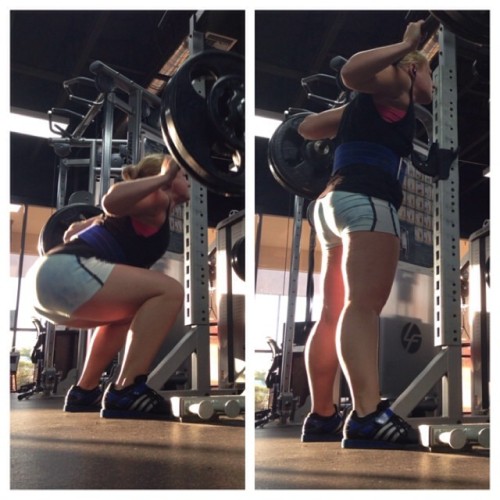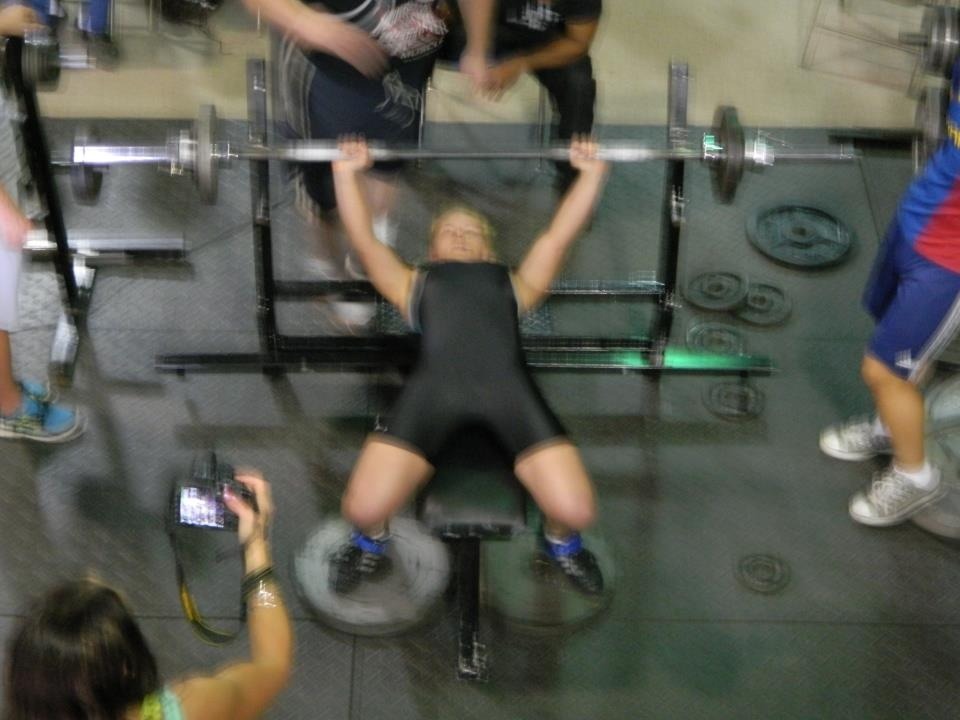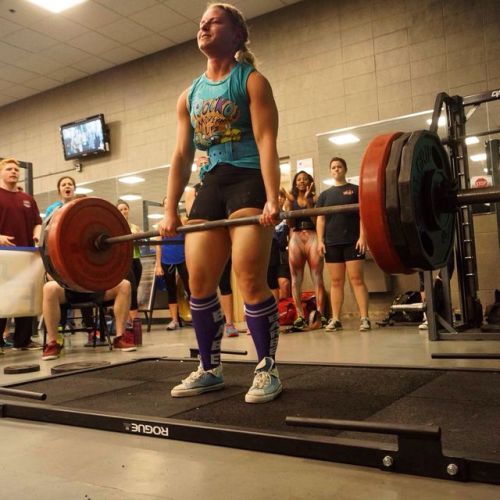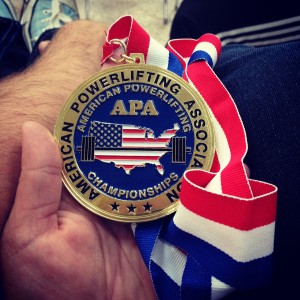What Do You Do? Part 2: Powerlifting
A lot of people hear I’m a powerlifter and think I do what they see on the Olympics. Powerlifting is a competition involving The Big Three – Squat, Bench and Deadlift. Athletes are separated based on weight, age, gender and if they’re using special equipment or not to compete. For the sake of this conversation, I’m only going to talk about “raw” powerlifting. This is what I compete in.
Raw powerlifting involves the use of a weight belt, knee sleeves or knee wraps, and wrist wraps. Some federations have two types of raw powerlifting, which allow or disallow the use of knee wraps. It comes down to the individual lifter as to what equipment they want to use. I compete in knee wraps and with a belt. “Geared” or “equipped” powerlifting involves special suits that help a lifter complete each move.
Before each competition an athlete will weigh in on a scale in front of a judge, where they’ll be sorted into a weight class. This is important for a lot of lifters because the less you weigh, the more impressive your lifts are. This can be a catch-22 because the means through which the person tried to lose the weight can damage their lifting. Some people go weeks without carbohydrates, others don’t drink any water and sit in a sauna for hours – that will hurt their lifts if they don’t rehydrate appropriately.
The Squat

The squat is the first move performed in an event. The lifter has 3 tries to hit the heaviest weight they can do. It’s not simply the act of squatting, there’s more to it. A lifter will take the bar off the rack and step away from the rack. The judge sitting in front of them will tell them to start the lift. The lifter will then lower into a squat – depth depends on the federation. For most federations you just need your femur (thigh bone) to be parallel to the ground. Others require the crease of your hip to be lower than your knee. Make sure you look up your federation to see which is required. The lifter will complete the lift and wait for the judge to tell them to re-rack the weight. If the lifter executed the lift to completeness, a scoreboard to the side will light up with 3 white lights. Each judge has one “vote” – either white (good) or red (bad). They each evaluate different parts of the lift to make sure it was completed appropriately. The lifter will wait their turn for their second and third attempts. A lifter does not attempt all 3 in a row, they are given time to rest.
Bench Press

Bench press is one of the most well known lifts, so I’ll keep this brief. The main differences between the competition lift and the average joe involves the commands. The lifter will unrack the bar from the rack and, depending on the federation, wait for the cue to start. The lifter lowers the bar to their chest (actually touching the chest) and waits for the command to “press.” At this time the lifter will press the bar off their chest. There is no bounce, the bar must be paused on the chest. The judge will then tell them to re-rack. You miss a lift if one arm locks out before the other, or if the bar comes down then back up.
Deadlift

A deadlift is exactly what it sounds like – lifting dead weight from the ground. A lifter will lift the bar off the ground, lock it out, and wait for the command to lower it back to the ground. You cannot just drop the bar on the ground – if you see people let the bar go from the lock out they’re not powerlifting. They’re picking up a heavy weight and then dropping it on the ground. Part of the execution of the lift is keeping your hands on the bar the entire lift. While this lift has less commands, it can be much harder to complete for various reasons. If the bar travels downwards before completion of the lift it’s no good. If the lifter hitches the bar, the lift is no good. If the lifter’s grip slips and the bar comes out of their hand, no lift.
Every athlete gets 3 attempts at each lift. Some federations allow a 4th attempt if it’s for a world or national record. At the end of the meet lifters are awarded based on how much they lifted vs. their body weight. Different federations use different calculators, but The Wilks Score is the most popular one. Some use calculators that take age into consideration as well, since sometimes a 25 year old man and a 15 year old man will be in the same weight class. Awards are also given to best overall lifter, which will compare the 300 pound person to the 140 pound person.
If you’re interested in powerlifting, go to powerliftingwatch.com and find a gym or a coach, or even go to a meet!
